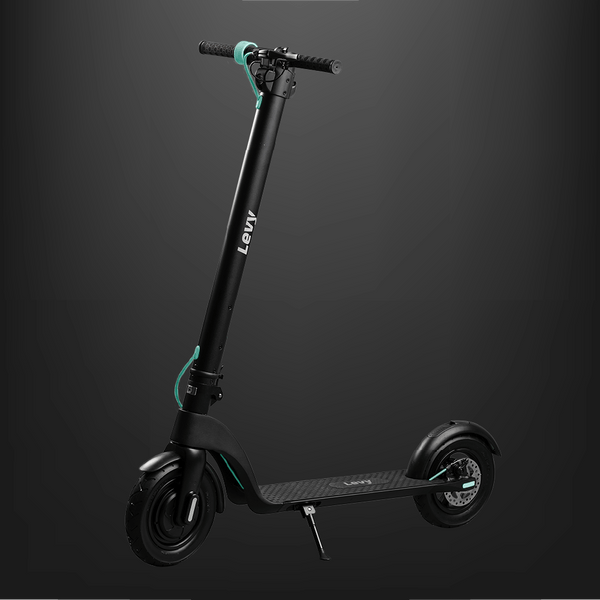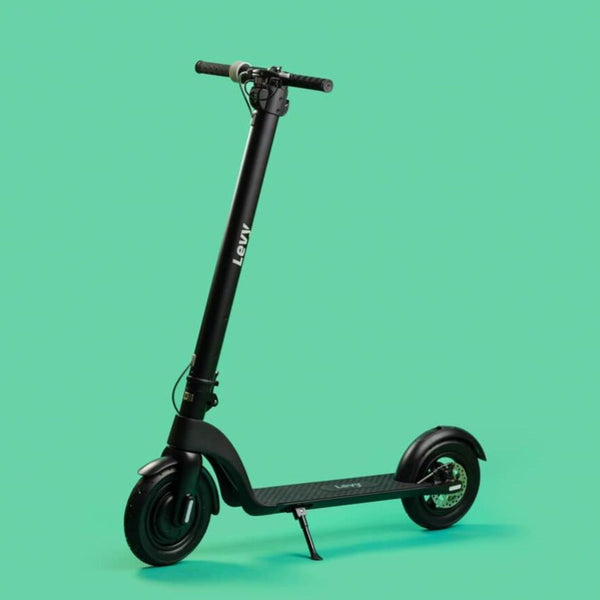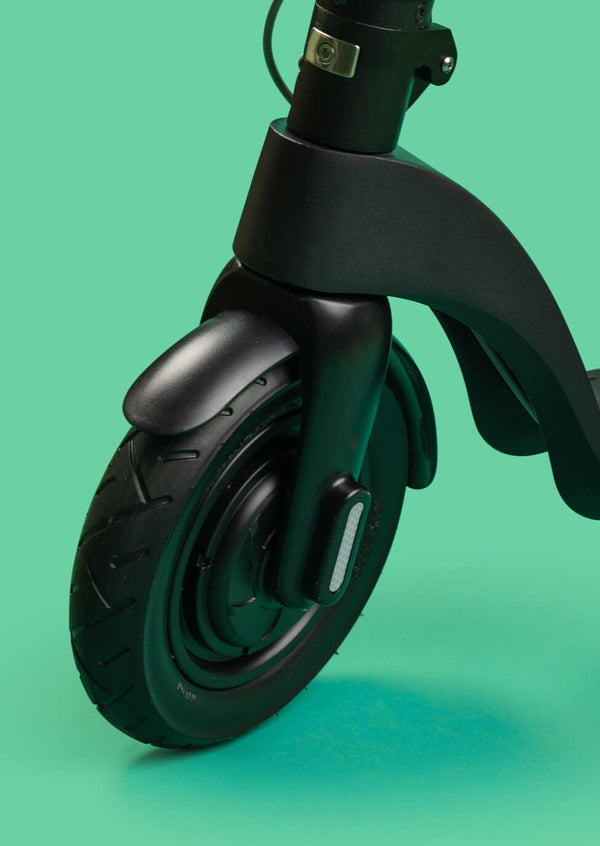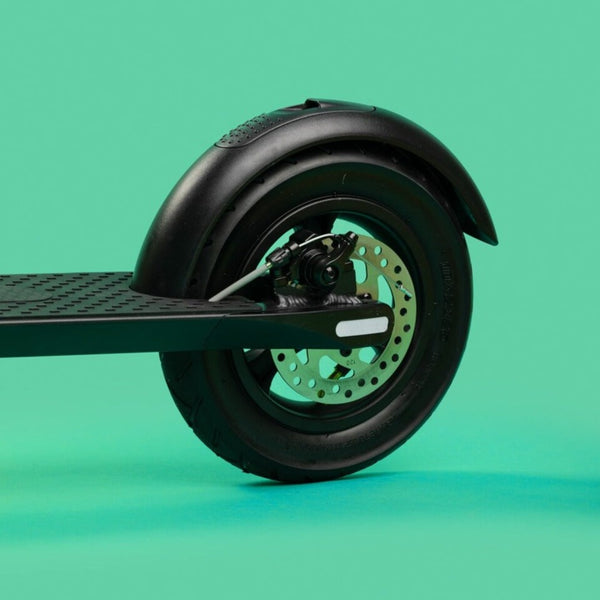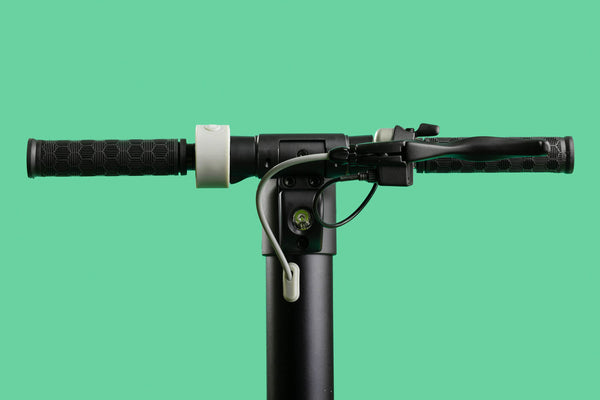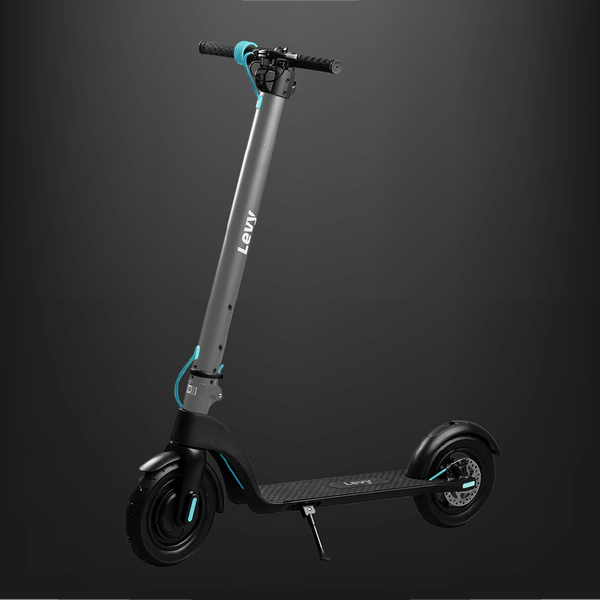The everyday electric scooter

18 mph
With Cruise Control

10 mi
Range per Battery

3 hrs
Charge Time

28 lbs
Quick Folding
Battery
Battery 36 V, 6.4 aH (274 Watt-hours)
Weight
28 pounds
Speed
Up to 18 mph
Driving Modes
Beginner, Eco, Sport
Range
Up to 10 mi per battery pack
Standing Height
46”
Cell Type
18650 Li-Ion
Display Controls
Cruise Control, Headlights
Charging Time
3 hours
Wheels
10” Pneumatic or Solid
Material
Aluminum Alloy
Colors
Red, Green, Gray, Blue
All of our electric scooters come with a six month warranty covering manufacturing defects. If your scooter malfunctions during the warranty period, Levy will repair the affected product at no charge, exchange with an equivalent replacement, or supply a replacement part depending on the issue. We also have a network of Service Partners that can assist with repairs even outside of warranty.
Items specifically excluded under the warranty include:
 Flat Tires
Flat Tires Normal wear to break pads
Normal wear to break pads Normal reduction in battery capacity over the life of the battery cells
Normal reduction in battery capacity over the life of the battery cells
Warranties can be extended up to two years during checkout.


The Levy and Levy Plus electric scooters both feature unique swappable battery systems. Batteries can be interchanged and charged separately outside of the scooter. Apart from the convenience in extending the range of your scooter by carrying additional battery packs, another major benefit is prolonging the life of your electric scooter. Most scooters have batteries built into their frames, making replacements much more costly or not possible at all. Being able to purchase replacement batteries separately is a major benefit of owning a Levy.
All Levy Scooters are equipped with puncture-resistant pneumatic tires. These tires feature a thick inner coating of rubber for durability, along with puncture-resistant outer treads for enhanced traction. An inner tube is also incorporated to minimize the possibility of leaks.

Levy tires are designed for easy replacement, eliminating the need for special tools. The outer tire can be effortlessly removed by hand from either wheel, facilitating quick and simple changes of both the outer tire and the tube.
Additionally, Levy tires offer a versatile pressure range of 40 to 60 PSI to suit rider comfort. Opting for a lower pressure enhances shock absorption and grip, while a higher PSI can boost speed.
Furthermore, Levy tires feature a double valve sealed inner tube, ensuring leak prevention during rides. This design is compatible with any standard bike pump, making inflation straightforward and convenient.

Tubeless tires provide the same pneumatic shock absorption as tubed tires (as they are also air filled), but often don't have the durability of double sealed tires. When a tubeless tire develops a puncture, the whole tire will often need to be removed / replaced. Since they are similar to how car tires function, you may also be able to plug or patch the tire instead of replacing it.
Since tubeless tires don't use inner tubes, and instead rely on a vacuum tight air seal around the rim of the wheel, you can sometimes repair the tire puncture by using tire slime or other tire sealants to stop the leak. However, using tire sealant requires the valve of the tire to be removed, thus fully deflating the tire and unseating it from the rim. To re-inflate the tire and properly set the bead of the tire around the rim, you will need a high pressure air compressor, usually only found in bike shops. A pressure of at least 120 PSI is needed to inflate these - as outlined in our install video here.

The main benefit of solid tires is that they are fully puncture proof and require little maintenance. They only need to be replaced when the tread is worn through. All Levy wheels are compatible with Solid tires to be used as replacements.
However, because they are not pneumatic, these tires do not provide any shock absorption compared to air-filled tires. We recommend them for riders that are primarily using smooth paved walkways and paths versus public roads, which often have potholes and broken pavement.
The ride won't be quite as smooth with solid tires, especially if you are riding on rough pavement. Additionally, since these tires don't provide as much natural grip as air-filled tires, traction on wet surfaces will be reduced.

Fully Swappable Battery
Don't put a limit on the range of your electric scooter. Levy batteries can be swapped out in seconds and charged outside of the scooter for maximum portability and convenience. Unlike other scooters, Levy battery cells are self-contained in fireproof, waterproof and puncture-proof metal casing
Electric with a Kick
Quick folding design makes your scooter easy to carry and stow away at only 28 lbs. Plus, light enough to be used as a manual kick scooter when powered off.

Designed for the city and beyond
Front to back, we've got you covered. Levy electric scooters come with a rear disc brake, front e-brake, and back fender brake to keep you in control. Bright LED headlights in the front and taillight in the back to keep you riding no matter the conditions.

Customer Reviews




